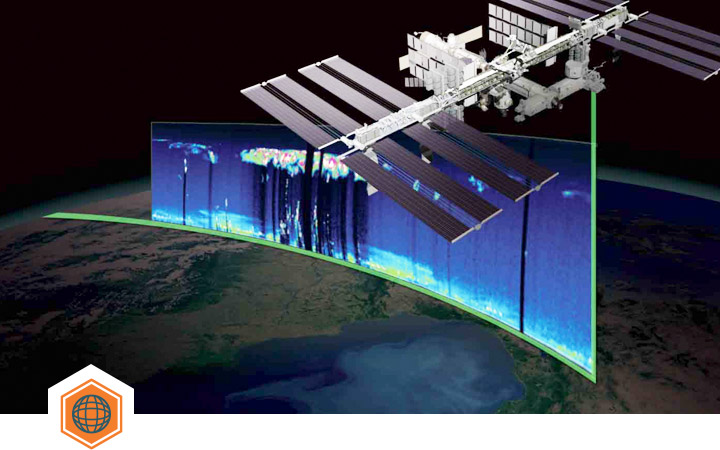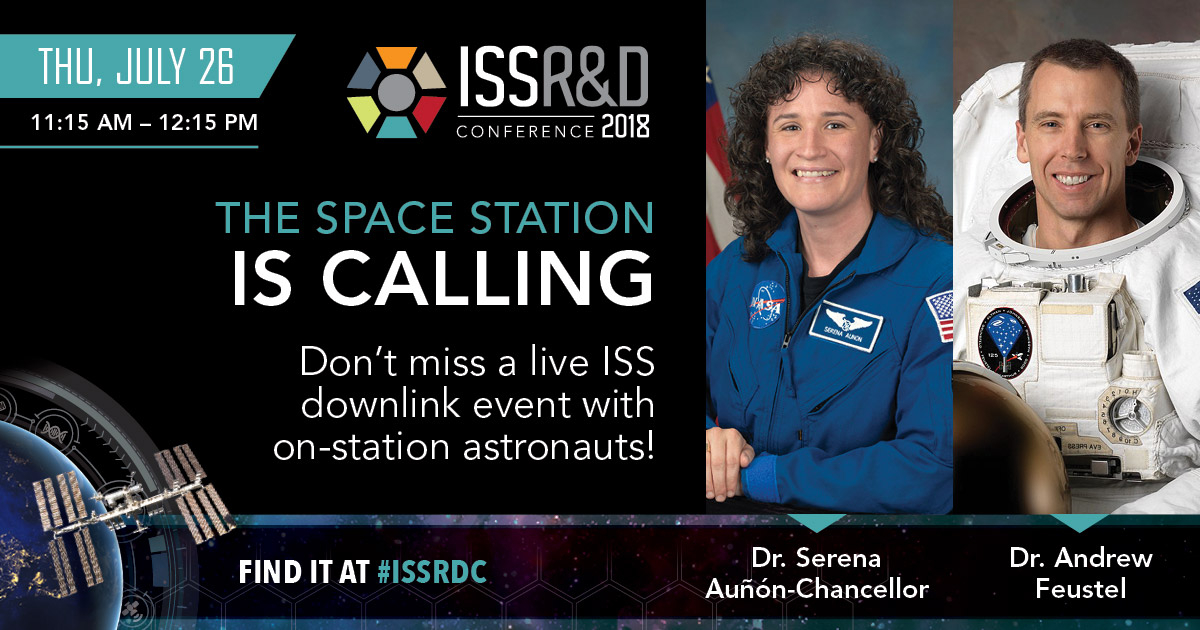From its position in low Earth orbit (about 240 miles from Earth’s surface), the International Space Station provides a unique vantage point for observations both inward toward the Earth and outward into the vastness of space. Remote sensing from the ISS has a wide range of applications—from monitoring our planet’s land and oceans to studying our atmosphere, aiding response to natural disasters, and probing space for a better understanding of the universe around us.

You can find out the latest results from remote sensing and Earth science research on the space station at the 2018 ISS Research and Development Conference (ISSRDC)—Monday, July 23 through Thursday, July 26 in San Francisco. ISSRDC is the place to go to hear thought leaders and subject matter experts discuss the latest R&D taking place in low Earth orbit! A technical session on Tuesday will highlight the most recent results in space-based remote sensing and Earth science research. More details on the technical sessions are listed on the ISSRDC website.
Read below to see how the ISS can be used to advance remote sensing and Earth science research.
Earth Imaging
In addition to offering breathtaking views of our beautiful planet, the ISS provides a vantage point to collect valuable Earth observation data. The ISS enables imaging with better spatial resolution than traditional satellites. Also, as opposed to traditional satellites whose orbital path passes over the same area at approximately the same time each day, the orbit of the ISS goes through a repeated pattern that enables observations of locations on Earth’s surface at different times of the day and year under different lighting conditions. Additionally, the orbital path of the ISS covers almost all of the populated regions of our planet.
Several instruments are used for Earth observation from the ISS. In addition to cameras that capture detailed visual images, advanced imaging systems such as hyperspectral and thermal sensors provide imaging of a wide variety of phenomena.

A Hyperspectral Imager for the Coastal Ocean (HICO) image of western Lake Erie, Aug. 15, 2014, taken from the orbital perspective of the International Space Station.
Media Credit: Image courtesy of HICO Team/Naval Research Laboratory
Researchers can use Earth observation data from the ISS to:
- Monitor natural disasters such as hurricanes, tsunamis, and mudslides and aid in response and recovery efforts
- Study water quality and assess factors contributing to harmful algal blooms (which are detrimental to both humans and marine life) and develop methods for improved detection
- Collect valuable land use data, such as agricultural information on the health and abundance of crops and information on urban growth
- Better understand variations in ecosystem productivity (the ability of an ecosystem to convert carbon dioxide into biomass), which is important for improving crop and forest growth, optimizing use of resources such as water and fertilizer, and adjusting for changes in Earth’s climate
- Track global maritime traffic and monitor ships in open water (ground-based systems can only monitor coastal waters), providing important information such as ship position, speed, and course
- Detect illegal fishing activities
Space Imaging

Turning our gaze outward, the ISS provides a powerful platform for space imaging. The space station enables a wide variety of studies aimed at better understanding planetary science, particle physics, and the origin and evolution of our universe.
Researchers can use the ISS to:
- Study the full cosmic ray spectrum
- Measure X-ray sources such as black holes and neutron stars
- Assess features of the sun’s radiation
- Directly image planets outside our solar system orbiting distant stars
- Search for evidence of dark matter and primordial antimatter (original antimatter from the early universe)
- Observe meteors passing through Earth’s atmosphere to learn more about asteroids and comets in our solar system
Read more about ISS National Lab research in the areas of remote sensing and Earth science:
- Constellations, Clouds, & the Conundrum of Big Data Processing: The Hyperspectral Imager for the Coastal Ocean Image Processing System
- Tropical Cyclone in Sight: Tracking Hurricanes and Typhoons from Space
- On the Frontier of Space: Looking Outward to Better Understand the Universe Around Us
- Pushing Research to New Heights: Innovative Research at the ISS R&D Conference
- Jumpstarting the CubeSat Revolution with Reliable Launch from the ISS
- MUSES Gives Users a Unique View of Earth
- Commercial Use of the ISS for Maritime Tracking: An Operational Evaluation







